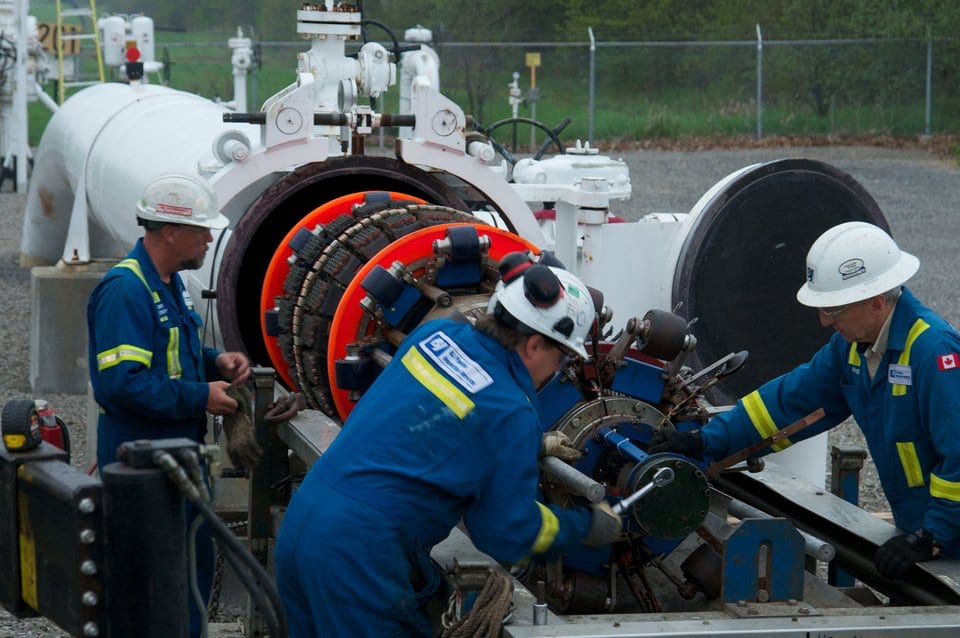As technology has evolved over the years, so has safety, efficiency, and environmental performance, impacting every dimension of the pipeline industry: from the metallurgy and quality control in the manufacturing of pipe, to pipeline construction processes, maintenance, leak detection, monitoring, and spill response.
New Infrastructure
At the front end, pipeline companies building new infrastructure today all vet their vendors carefully. These assessments ensure that pipe mills conform to the latest standards of manufacturing. Professionals look at control points, assurance steps, and certifications. High levels of automation and quality control ensure consistency in the product that reaches the field.
Automation is part of the construction process. Automated pipe welding and automated liquid applicators for coating pipe girth welds deliver more consistent results. Automated girth weld coatings improve safety for workers by minimizing exposure to harmful chemicals and result in fewer repairs than manual application.
Many ideas for pipeline safety, such as cathodic protection in tandem with pipe coatings to protect against external corrosion, have been used since the early days of pipelining. Technology advances have simply made these concepts stronger. Advances in materials led to the adoption of fusion bond epoxy, which is inert to the environment and safe to handle. With automated girth coatings now matching the epoxy on the rest of the pipe, the result—in theory—is a pipe in the ground that has a continuous film of corrosion protection.
Modern Tools
Modern ILI tools (smart pigs) can identify a variety of defects in pipelines by combining five or six inspection device technologies onto one unit to tackle difficult-to-detect issues. Pipeline companies help in the continuing evolution of ILI accuracy by sharing data with vendors. A pipeline company will dig up its pipeline for maintenance based on the features detected by ILI tools. By sharing that information with the tool vendor, its data sets continually improve.
Technology advances have also improved the monitoring for leaks and the ability to respond to a spill. The introduction of mass balance systems (MBS) involves measuring the volume of product at intervals along the pipeline and making calculations to determine whether the mass of the product remains within predictable norms. Anomalies suggest losses due to leaks.
Regulation
Pipelines that were once managed by people communicating over phones and manually turning valves at pumping stations are now run from a centralized control center. Enbridge’s control room, for example, is in Edmonton, Alberta, Canada. It is completely self-sufficient in its capacity to operate the company’s entire system throughout North America.
This level of centralization and oversight requires a lot of computing power. Higher levels of automation of certain control functions that eliminate the need for human intervention—for example, if a system becomes over-pressurized, automated release systems are activated—add to that computing load. The interpretation of data from the latest generation of ILI tools, running integrity maintenance, and system optimization also demand significant computing power.
The current digital transformation, which will include the development of artificial intelligence, is also expected to lead to further pipeline safety and environmental performance improvements over the next decade.


